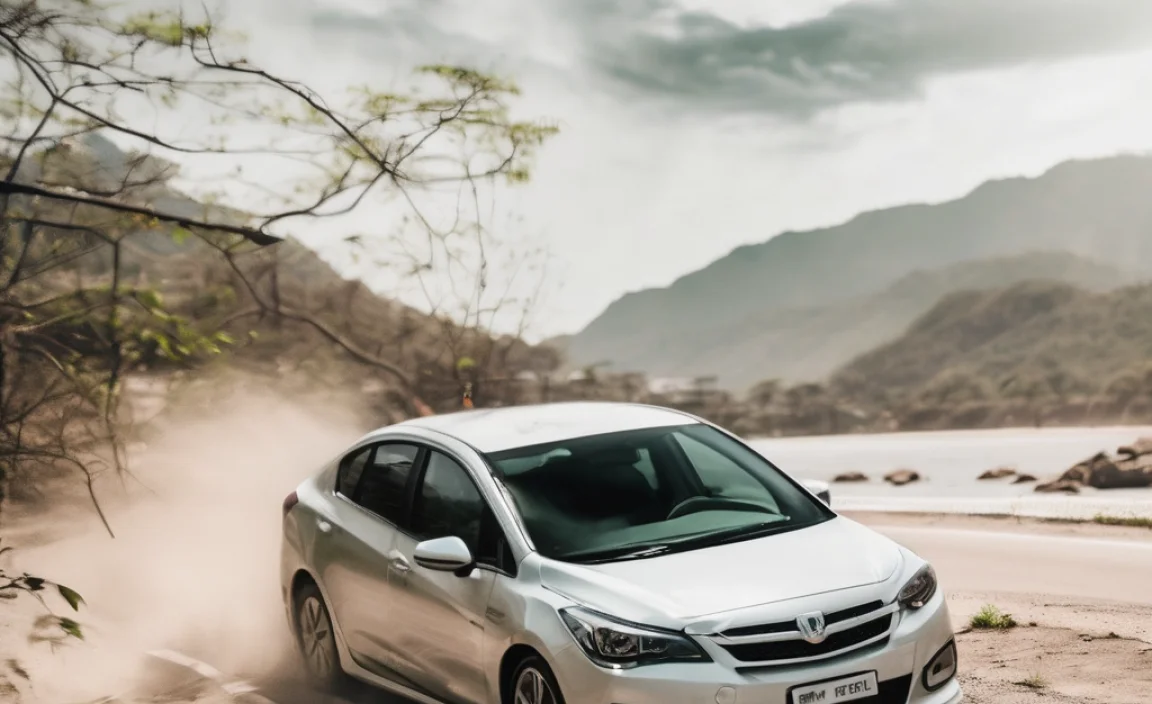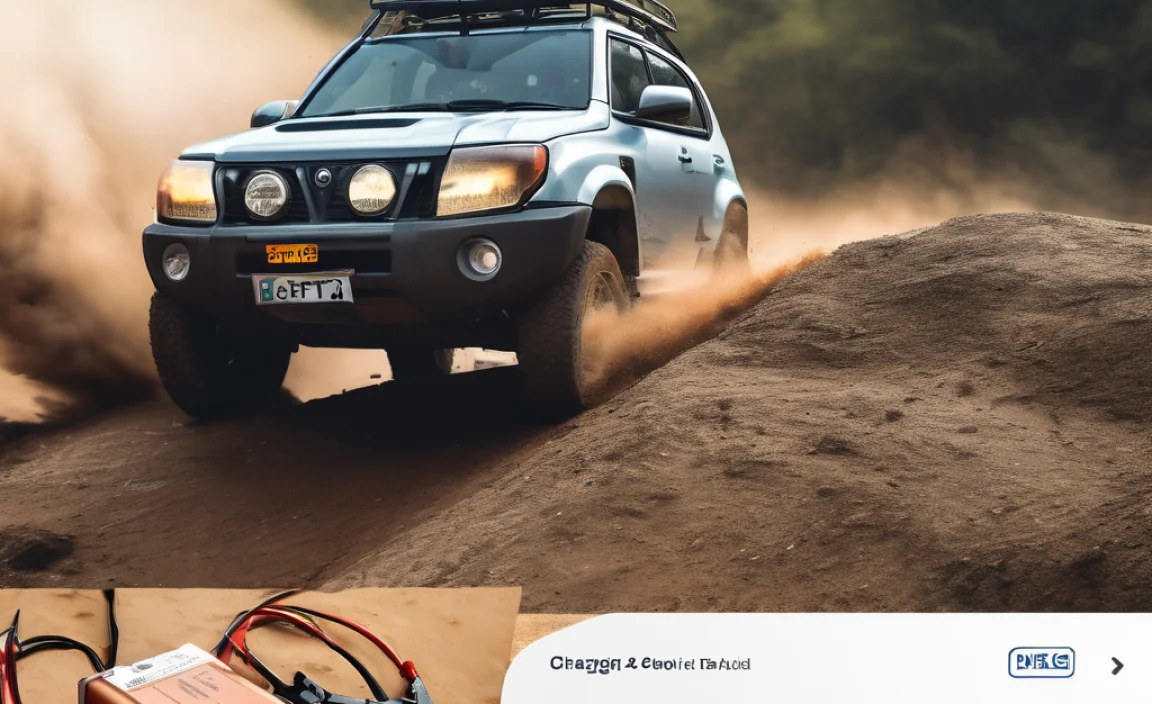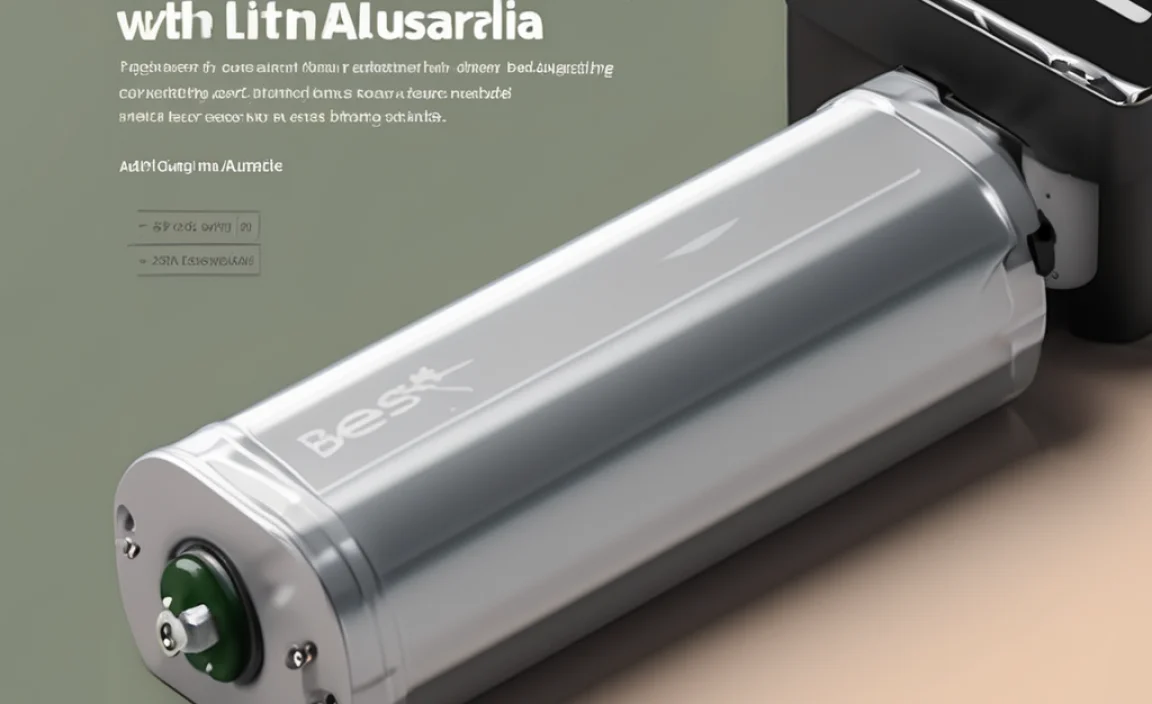Quick Summary: A dual battery charger for a boat is essential for keeping both your starting and deep-cycle marine batteries fully charged. This ensures reliable power for engine starting and all your onboard electronics, preventing mid-trip power failures. Investing in the right dual charger provides peace of mind and extends battery life.
Dual Battery Charger For Boat: Essential Power for Every Voyage
Ever had your boat’s engine refuse to start, or experienced your essential electronics suddenly go dead when you’re out on the water? It’s a frustrating situation that can cut short a great day of fishing or cruising. Often, the culprit is a power management issue, where your boat’s batteries aren’t getting the consistent charge they need. This is where a dual battery charger for your boat becomes an absolute lifesaver. It’s about ensuring you have power when you need it most – from starting that engine to running your navigation gear and entertainment systems.
Don’t worry if this sounds a bit technical. We’re here to break down exactly why a dual battery charger is so important, what to look for when choosing one, and how it works its magic. By the end of this guide, you’ll feel confident about keeping your marine batteries in top shape for every adventure on the water.
Why Your Boat Needs a Dual Battery Charger
Boats are unique environments. Unlike a car which primarily uses its battery for starting and a short drive, a boat’s electrical system works much harder. You might have one battery dedicated solely to starting the engine (a cranking battery) and another (or more) serving as deep-cycle batteries for powering everything else – lights, fish finders, GPS, radios, trolling motors, and even refrigerators. These two types of batteries have different needs.
A standard charger might not be optimized to care for both types properly. A dual battery charger is designed with this diversity in mind. It can intelligently manage the charging processes for each battery, ensuring neither is overcharged nor undercharged, which is crucial for their longevity and performance.
Understanding Your Boat’s Batteries
Before we dive into chargers, let’s quickly touch upon the two main battery types you’ll find on a boat:
- Cranking Batteries (Starting Batteries): These are designed for short bursts of high power, like the split second needed to crank over an engine. They are built for starting power, not for sustained energy delivery.
- Deep-Cycle Batteries: These are built to provide a steady amount of power over extended periods. They can be discharged more deeply and recharged more times than cranking batteries. They are ideal for running accessories when the engine isn’t on. Some boats might have multiple deep-cycle batteries for heavy loads, like trolling motors or extensive electronics suites.
The key difference lies in their construction and how they are discharged and recharged. Trying to use a cranking battery for deep-cycle applications will significantly shorten its lifespan. Similarly, a deep-cycle battery isn’t ideal for starting an engine due to lower cranking amps.
The Role of a Dual Battery Charger
A dual battery charger does exactly what its name suggests: it charges more than one battery, often with smart technology to manage each battery’s specific needs independently. This is a step up from simpler chargers that might just deliver the same charge to all connected batteries, regardless of their type or condition.
Here’s why this is so important for a boat:
- Optimized Charging: Modern dual chargers often use multi-stage charging (like bulk, absorption, and float). They can even be programmed for different battery chemistries (like lead-acid, AGM, or lithium) and types. This ensures each battery is charged efficiently and safely.
- Battery Longevity: Proper and consistent charging prevents sulfation (a common problem in lead-acid batteries that degrades their capacity) and overcharging, both of which can drastically shorten a battery’s life.
- Reliability: With two power sources managed effectively, you significantly reduce the risk of a dead battery leaving you stranded. You’ll have confidence that your starting battery is ready to go and your accessories will have power throughout your excursion.
- Simplification: Instead of managing multiple chargers or a complex charging system, a single dual battery charger streamlines the process.
Types of Dual Battery Chargers for Boats
When looking for a dual battery charger, you’ll encounter a few common types:
1. AC-to-DC Battery Chargers
These are the most common type. You plug them into shore power (an AC outlet at the dock or marina) and they convert the AC power to DC power to charge your batteries. Many modern marine chargers are “smart” chargers, meaning they have microprocessors to control the charging process.
- Multi-Bank Chargers: These are designed to charge multiple batteries independently. A 2-bank charger is perfect for a boat with a starting and a house (deep-cycle) battery. Some go up to 4 or more banks for complex systems.
- Adjustable or Programmable Chargers: Higher-end models allow you to select battery type (Flooded, AGM, Gel, Lithium) and capacity, ensuring the most efficient and safe charge profile.
2. DC-to-DC Battery Chargers
These chargers use power from your boat’s alternator (which runs off the engine) to charge your batteries when underway. This is often referred to as a “battery isolator” or “charge controller” system, though dedicated DC-to-DC chargers offer more sophisticated management.
- Alternator Driven Charging: Essential if you have two separate battery banks and want to ensure the alternator effectively charges both without overworking it or damaging one battery type.
- Smart DC-to-DC Chargers: These can actively manage voltage and current from the alternator, often providing a superior charge to your deep-cycle or house battery bank compared to a direct connection. They can also be programmed for different battery types.
For most boaters who primarily charge at the dock, an AC-to-DC charger is the primary focus. However, a DC-to-DC charger becomes very useful if you have a large house battery bank and want to ensure it gets a good charge from the engine while you’re out on the water.
Key Features to Look For in a Dual Battery Charger
Not all dual battery chargers are created equal. Here’s what to consider:
- Number of Banks: Ensure it has at least as many banks as you have batteries you intend to charge independently. For most boats with one starting and one house battery, a 2-bank charger is sufficient.
- Amperage Rating: This indicates how quickly the charger can replenish your batteries. A good rule of thumb is to have a charger with an amperage output of at least 10% of your battery’s amp-hour (Ah) rating for faster charging, or a lower amperage for slow, continuous maintenance charging. For many boat batteries (100-200 Ah), a 10-20 amp charger per bank is a good starting point.
- Multi-Stage Charging: Look for chargers that offer at least a 3-stage charging profile (Bulk, Absorption, Float). Some offer 4 or 5 stages, including Equalization and Reconditioning, which can be beneficial for lead-acid batteries.
- Battery Type Compatibility: If you have AGM, Gel, or Lithium batteries, ensure the charger specifically supports these chemistries. Using the wrong profile can damage them.
- Waterproof/Marine Grade: Since it will likely be installed in a potentially damp environment, look for chargers with robust, waterproof casings and marine-grade components.
- Safety Features: Over-voltage protection, short-circuit protection, reverse polarity protection, and spark-proof connections are essential safety features.
- Low Amp Mode / Maintainer Mode: This is crucial for batteries that sit for long periods. The charger can keep the batteries topped up without overcharging, extending their life.
- Ease of Installation: Consider how easy it will be to mount and wire the charger. Some come with pre-made wiring harnesses.
A reputable brand name is also a good indicator of quality and reliability. Brands like ProMariner, NOCO, Sterling Power, and Minn Kota are well-regarded in the marine industry.
How a Dual Battery Charger Works (The Science Simplified)
At its core, a battery charger acts like a controlled energy source pushing electrons into your battery. A dual battery charger takes this a step further by managing this process separately for each battery bank it’s connected to.
Here’s a simplified look at multi-stage charging, which is common in smart dual chargers:
- Bulk Stage: The charger delivers maximum current to the battery until it reaches about 80% charged. The voltage is relatively low during this stage but the amperage is high. This refills the battery quickly.
- Absorption Stage: The charger begins to increase the voltage while the current gradually decreases. The battery is now taking the charge more readily. This stage brings the battery up to nearly 100% charge and is crucial for fully conditioning the battery.
- Float Stage: Once the battery is fully charged, the charger drops the voltage significantly and delivers only enough current to maintain the full charge. This prevents overcharging and keeps the battery ready for use. This stage can go on indefinitely.
Some advanced chargers also include:
- Equalization Stage: Primarily for flooded lead-acid batteries, this stage involves a controlled overcharge to balance the specific gravity of electrolyte in each cell. This helps remove sulfate crystals and can revive slightly degraded older batteries. It should be used sparingly as instructed by the battery manufacturer.
- Conditioning/Desulfation Stage: Uses specialized pulses to break down sulfate crystals that build up on lead-acid battery plates, thereby restoring capacity.
A dual charger applies these stages independently to each bank it’s connected to, recognizing the different states of charge and specific needs of each battery.
Installation: A Step-by-Step Guide
Installing a dual battery charger is a project most DIY boaters can tackle with some basic tools and a careful approach. Safety is paramount when working with electrical systems, especially on a boat.
Tools and Materials You’ll Need:
- Your new dual battery charger
- Marine-grade wiring (appropriate gauge for the amperage and distance – consult the charger manual or an online wire gauge calculator like this one from Blue Sea Systems)
- Marine-grade ring terminals and butt connectors
- Wire strippers and crimpers
- Screwdriver set
- Drill and drill bits
- Zip ties for cable management
- Multimeter (for testing voltage and continuity)
- Safety glasses and gloves
- Fuses or circuit breakers (appropriate for the charger’s output)
- Owner’s manual for your boat and batteries
Installation Steps:
- Safety First: Disconnect Power! Ensure your boat is unplugged from shore power. Crucially, disconnect the negative (black) terminal from both your starting and house batteries. Then, disconnect the positive (red) terminals. If you have a battery switch, ensure it’s in the “OFF” position.
- Choose a Location: Select a dry, well-ventilated spot that is easily accessible. Avoid areas where it could be submerged in water or subjected to excessive heat. Many chargers are designed to be bulkhead-mounted (attached to a wall or panel).
- Mount the Charger: Follow the manufacturer’s instructions to securely mount the charger using appropriate screws. Ensure it’s stable.
- Wire Management: Plan your wire runs. Keep them neat, secure them with zip ties, and avoid areas where they could be chafed or damaged. Use grommets when running wires through bulkheads.
- Connect Battery Banks:
- Identify the positive (+) and negative (-) terminals for each battery bank. This is crucial!
- Run marine-grade wire from the charger’s designated “Bank 1” output to the positive (+) terminal of your first battery (e.g., the starting battery). Use a ring terminal on the battery end and crimp it securely.
- Connect the corresponding negative (-) wire from the charger’s “Bank 1” negative output to the negative (-) terminal of the same battery.
- Repeat this process for “Bank 2” (and any additional banks), connecting to the positive (+) and negative (-) terminals of your second battery or battery bank (e.g., the house battery).
- Connect to AC Power: If your charger has a standard AC plug, you’ll connect it to a shore power outlet. If it’s hardwired, follow the manufacturer’s diagram carefully. Ensure any necessary inline fuses or circuit breakers are installed as per the manual.
- Double-Check Connections: Before reconnecting batteries or AC power, use your multimeter to check for continuity and ensure there are no short circuits. Verify positive is connected to positive and negative to negative for each bank.
- Re-Connect Batteries: Carefully reconnect the positive (red) terminals to each battery first, then the negative (black) terminals.
- Test the Charger: Plug the charger into shore power. Your charger should indicate that it’s operating. Check the charger’s display or indicator lights to confirm it’s charging and that it recognizes the battery banks. Consult your charger’s manual to understand its indicator lights.
Crucial Safety Tip: Always connect the positive (+) wires first when reconnecting the batteries and disconnect the negative (-) wires first when disconnecting. This minimizes the risk of accidental shorts caused by a tool bridging the terminals. Wear safety glasses!
AC vs. DC Charging: When to Use Which
The choice between relying solely on an AC charger or incorporating a DC-to-DC charger often depends on your boating habits and electrical setup.
AC-to-DC Chargers:
- Pros: Excellent for fully recharging batteries overnight at the dock. They are typically more affordable and simpler to understand. Provide sophisticated charging profiles for optimal battery health.
- Cons: Useless when away from shore power.
- Best For: Weekend cruisers, those with regular access to marinas, and anyone wanting a robust charge when the boat is stored.
DC-to-DC Chargers:
- Pros: Charge batteries while underway from the engine alternator. Can provide a more advanced charge profile than a simple alternator-to-battery connection, especially for sensitive battery types like lithium. Can act as a battery isolator, preventing the starting battery from being drained by house loads.
- Cons: Cannot provide a full charge on their own if the engine isn’t running for extended periods. Can be more complex to install and potentially more expensive.
- Best For: Trawler owners, long-range cruisers, or anyone with significant power consumption from their house bank where recharging from the engine is beneficial. Can significantly speed up charging deep-cycle batteries during a run compared to just the alternator alone.
Many serious boaters opt for a combination: a robust AC dual bank charger for dockside charging and a smart DC-to-DC charger (or advanced battery isolator) to maximize charging from the alternator while offshore.
Maintenance and Best Practices
A dual battery charger is a powerful tool, but it’s also part of a larger battery management system. Here’s how to get the most out of yours:
- Regular Checks: Periodically inspect wiring for any signs of wear, corrosion, or damage. Ensure connections are tight.
- Battery Health: Even with a good charger, batteries have a finite lifespan. Monitor their performance. If you notice significantly reduced run time or difficulty holding a charge, it might be time for replacement.
- Understand Your Batteries: Know your battery type (flooded, AGM, gel, lithium) and follow the manufacturer’s recommendations for charging and maintenance.
- Clean Terminals: Keep battery terminals clean and free of corrosion. A wire brush and a mixture of baking soda and water can help. Apply a terminal protectant after cleaning.
- Avoid Deep Discharge: Try not to let your deep-cycle batteries drop below 50% State of Charge too often. This greatly impacts their lifespan.
- Winterization: If your boat is stored in freezing temperatures, ensure your batteries are fully charged before storage, as a discharged battery can freeze and crack. Some chargers have a low-amp maintenance mode perfect for off-season storage.
Troubleshooting Common Issues
Even with the best equipment, you might encounter a snag. Here are a few common issues and fixes:
Issue: Charger not turning on or showing an error light.
- Check AC Power: Is the shore power outlet working? Is the charger’s plug securely in?
- Check Fuses/Breakers: Ensure any fuses in the charger or AC circuit are intact.
- Check DC Connections: Verify that the positive and negative wires are securely connected to the correct battery terminals.
- Consult Manual: Error codes are often explained in the charger’s manual.



